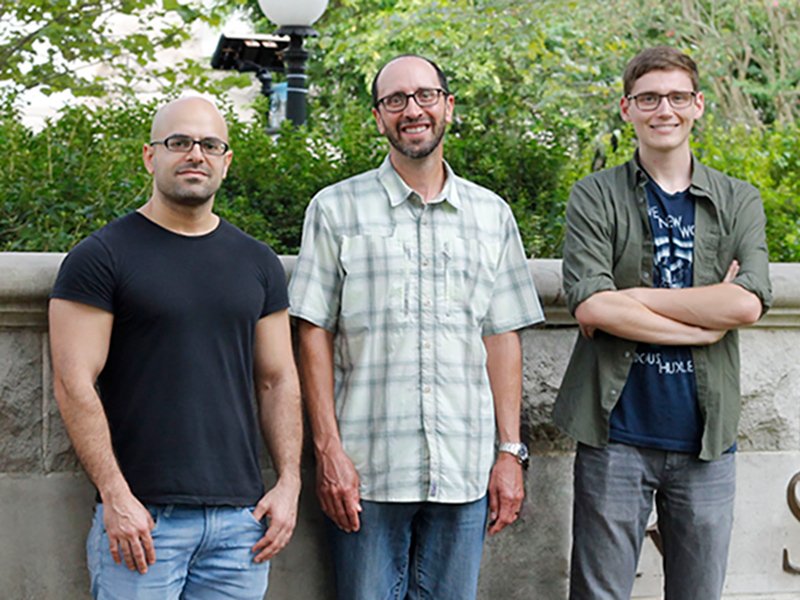But a research team in the Tulane University Department of Biomedical Engineering is developing a novel cancer treatment that is able to shrink tumors to an average of less than 3 percent of their initial size in a mouse model.
The work of Jonah S. Harmon, Foad Kabinejadian and Joseph Bull, the John and Elsie Martinez Biomedical Engineering Chair, is being featured in the September issue of APL Bioengineering and in a release by the American Institute of Physics. Harmon, the lead author, is a former PhD student of Bull’s and a recent graduate of Tulane’s Biomedical Engineering Ph.D. program, and Kabinejadian is a recent post-doctoral Fellow in Bull’s lab.
The paper is titled “Combined gas embolization and chemotherapy can result in complete tumor regression in a murine hepatocellular carcinoma model.”
The typical treatment for this type of liver tumor is called transarterial chemoembolization, but researchers say it is invasive and too imprecise to be a local drug delivery method.
To increase the precision, the Tulane team created a combination treatment that involves vaporizing tiny droplets of perfluorocarbon, a common organic material comprised of carbon and fluorine that is used in pharmaceuticals, anesthetics and industrial fluids. The method is called gas embolization, and while relatively new, it is the particular research area of the authors.
“By changing the treatment parameters in this paper, we were able to achieve tumor regression, and by combining our method with chemotherapy we were able to reduce regrowth following treatment,” Bull said. “Gas embolization has never been used in patients. Demonstrating that it can induce tumor regression is really new. We’re very excited about the work in this paper.”
Their study tested gas embolization alone and in combination with two common cancer drugs — doxorubicin (DOX) and tirapazamine . Gas embolization stops blood flow to the tumor, and it was highly effective when used in combination with DOX, Bull said.
The combination of gas embolization and DOX was so effective that, on average, tumors shrank to 2.9% of their initial size. When DOX was used alone, tumors grew to 300% of their initial size.
In the gas embolization method, perfluorocarbon liquid is administered intravenously, interacting with the DOX that has been administered in the body. DOX binds to the surface of the droplets of liquid, which are small enough to travel through capillaries and do not cause blood vessel blockage until they are vaporized. Thus, treatment can be applied locally at the specific site of the tumor.
To turn these tiny liquid droplets into microbubbles and cut off the blood flow to the tumor, ultrasound is applied from outside the body. When exposed to ultrasound waves, the shell of the liquid droplets “focuses the ultrasound to produce a region of low pressure inside the droplet, the nucleation site at which the liquid first transitions to gas, and then the gas bubbles inside the liquid droplet grow,” Bull said, until the droplet turns completely into microbubbles. The drug DOX binds to the shell of the droplet, and the medicine becomes available to diffuse into the tumor, while the microbubbles cut off blood supply.
The combination of gas embolization and DOX was so effective that, on average, tumors shrank to 2.9% of their initial size. When DOX was used alone, tumors grew to 300% of their initial size.


